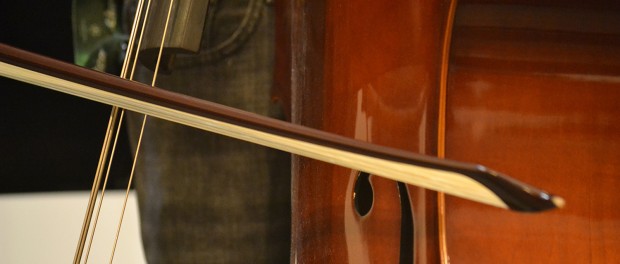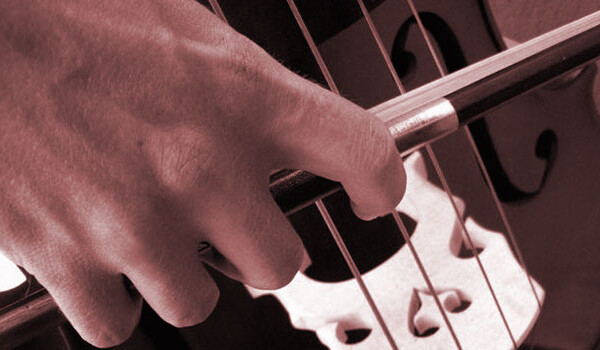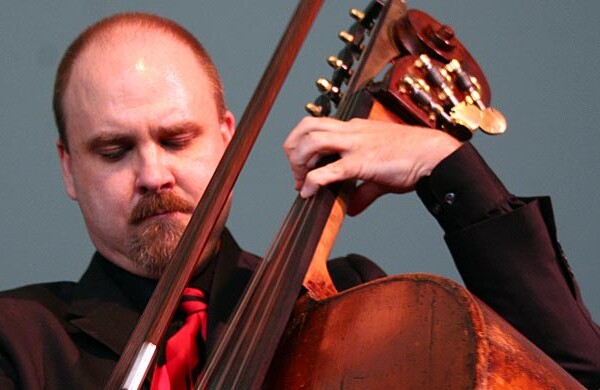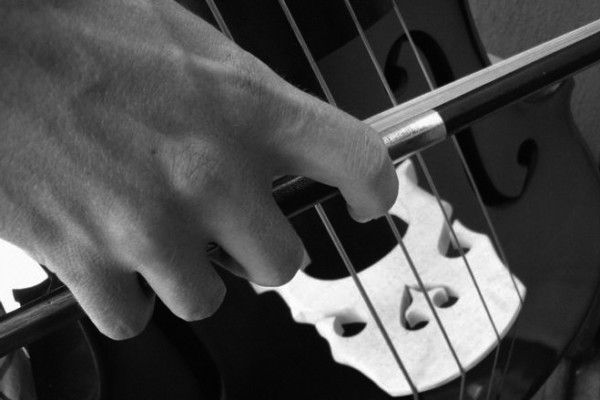Arco Tone on the Bass: Three Main Components

There are a number of things than can adversely affect a bassist’s tone when they are using the bow. For example, failing to move the bow parallel to the bridge will cause impurities in the tone. Too much, or too little, rosin can cause problems. So can worn out bow hair or an improperly tightened bow. Beyond moving the bow parallel to the bridge and having properly maintenanced equipment, however, we can create the tone we are looking for by experimenting, and adjusting, just three main variables: Weight, Placement and Speed.
Weight refers to the amount of force placed on the string by the bow. Although “pressure” would be another word for this, many avoid using this word as it implies muscular force, rather than the weight of the arm. Using the weight of the arm is nearly always preferable to using muscular effort.
Placement refers to where we place the bow on the string. For example, “over the fingerboard” and “one centimeter from the bridge” would be instructions for bow placement.
Speed refers to how fast we are moving the bow, not the speed of the note itself. For example, if we play a quarter note at 60 bpm we might use ¼ of the length of the bow to do so. Alternatively, we could play a quarter note at 60 bpm using ½ of the bow, by doubling the speed at which we move the bow.
If we find we are unhappy with the tone we are creating, we would be wise to follow a simple protocol:
Become aware of what we are doing with the bow, i.e., what is not working.
- Where have we placed the bow?
- How much weight are we using?
- How fast are we moving the bow?
Experiment with one or more factors
- Try more speed and less speed
- Try more weight and less weight
- Try bowing closer to the bridge and closer to the fingerboard
- Try more speed and more weight, more speed and less weight
- Continue until you find a more pleasing tone. This often happens sooner, rather than later.
Remember what adjustments you made to create the tone you are looking to achieve
- How did you get the sound you wanted? Take note so you can recreate it.
Here is an example of how one might go about this. It is just one of a myriad of possibilities:
- In the middle of a piece, you play four quarter notes on the G string. They sound crushed, with lots of grit in the tone. Furthermore, there isn’t much resonance and it’s on the scratchy and “grunty” side.
- You notice that you are bowing over the fingerboard, using about one inch of bow per note and you are pressing into the string with a great deal of force.
- First, you lower the bow to be about halfway between the fingerboard and the bridge, while keeping the same bow speed and weight as before. This improves things a bit, but the sound is still unpleasant.
- Next, you try bowing halfway between the fingerboard and the bridge with triple the bow speed. Doing this creates a more pleasing tone, but it much too loud.
- Next, you bow halfway between the fingerboard and the bridge with triple your original bow speed and with about half your original pressure into the string. This is a sound much more to your liking and appropriate for the music you are playing.
- You make note of your new Placement, Speed and Weight and repeat your four quarter notes several times successfully.
- Next you “take a run” at the passage and when you get to the bar in question you make sure you are bowing halfway between the fingerboard and the bridge with a faster bow speed than before and with about half your previous bow pressure.
So next time you are unhappy with your tone, experiment with your Weight, Placement and Speed.
Dr. Donovan Stokes is on the faculty of Shenandoah University-Conservatory. Visit him online at www.donovanstokes.com and check out the Bass Coalition at www.basscoalition.com.



